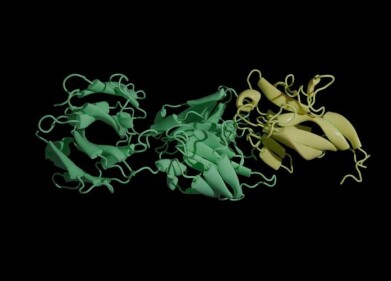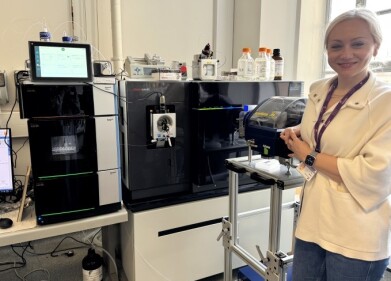Research news
Less complex light found to boost emerging AI computations
Aug 09 2024
An international research collaboration comprising scientists from the Universities of Oxford, Muenster, Heidelberg and Ghent, have discovered that replacing lasers with less strict light sources can boost performance in some emerging light-driven applications, such as with a photonic AI accelerator – where photons are used instead of electrons to perform AI computations.
Their surprising insight opens the way for cheaper, less energy-intensive light sources to be used in applications that have typically relied on expensive, high-spec lasers.
The researchers used a partially coherent light source by harnessing a narrow portion of the spectrum of incoherent light produced by an electrically-pumped erbium-doped fiber amplifier (a device used in optical communication to boost the strength of light signals traveling through optical fibers). This light was evenly split and distributed into different input channels for a parallel AI computational array. Using such a light source, the parallelism of AI computation was enhanced by N times in a photonic accelerator with N input channels.
As a test case, the team used this system to identify Parkinson’s disease patients by analysing how they walked, achieving a classification accuracy of 92.2%. They also demonstrated the use of a simple system using only one partially coherent light source with 9 input channels to perform high-speed AI tasks at around 100 billion operations per second.
First author Dr Bowei Dong at the Department of Materials, University of Oxford, explains: “The benefit of using ‘poorer’ light sources has a scaling effect. You can run your AI models 100 times faster compared to a laser system, if the photonic accelerator scales to 100 input channels.”
Co-first author Dr Frank Brückerhoff-Plückelmann at the Kirchhoff-Institute for Physics, Heidelberg University said: “A more important aspect is that our system does not rely on lasers. It saves effort in optical control, such as frequency locking and thermal management. And you don’t have to worry about phase errors because the system works purely on light intensity.”
Professor Harish Bhaskaran, Department of Materials, University of Oxford and co-founder of Salience Labs, who led the work said: “While this work showcases the use of such partially coherent light in some emerging areas of photonic computing, we will in future also investigate whether this insight might apply to optical communications, particularly in the emerging optical interconnect technology space. This is an area of research that is moving rapidly with a lot of interesting science and engineering to explore.”
More information online
Digital Edition
Lab Asia 32.2 April
April 2025
Chromatography Articles - Effects of small deviations in flow rate on GPC/SEC results Mass Spectrometry & Spectroscopy Articles - Waiting for the present to catch up to the future: A bette...
View all digital editions
Events
Apr 09 2025 Tokyo, Japan
Apr 22 2025 Hammamet, Tunisia
Apr 22 2025 Kintex, South Korea
Analytica Anacon India & IndiaLabExpo
Apr 23 2025 Mumbai, India
Apr 23 2025 Moscow, Russia
























